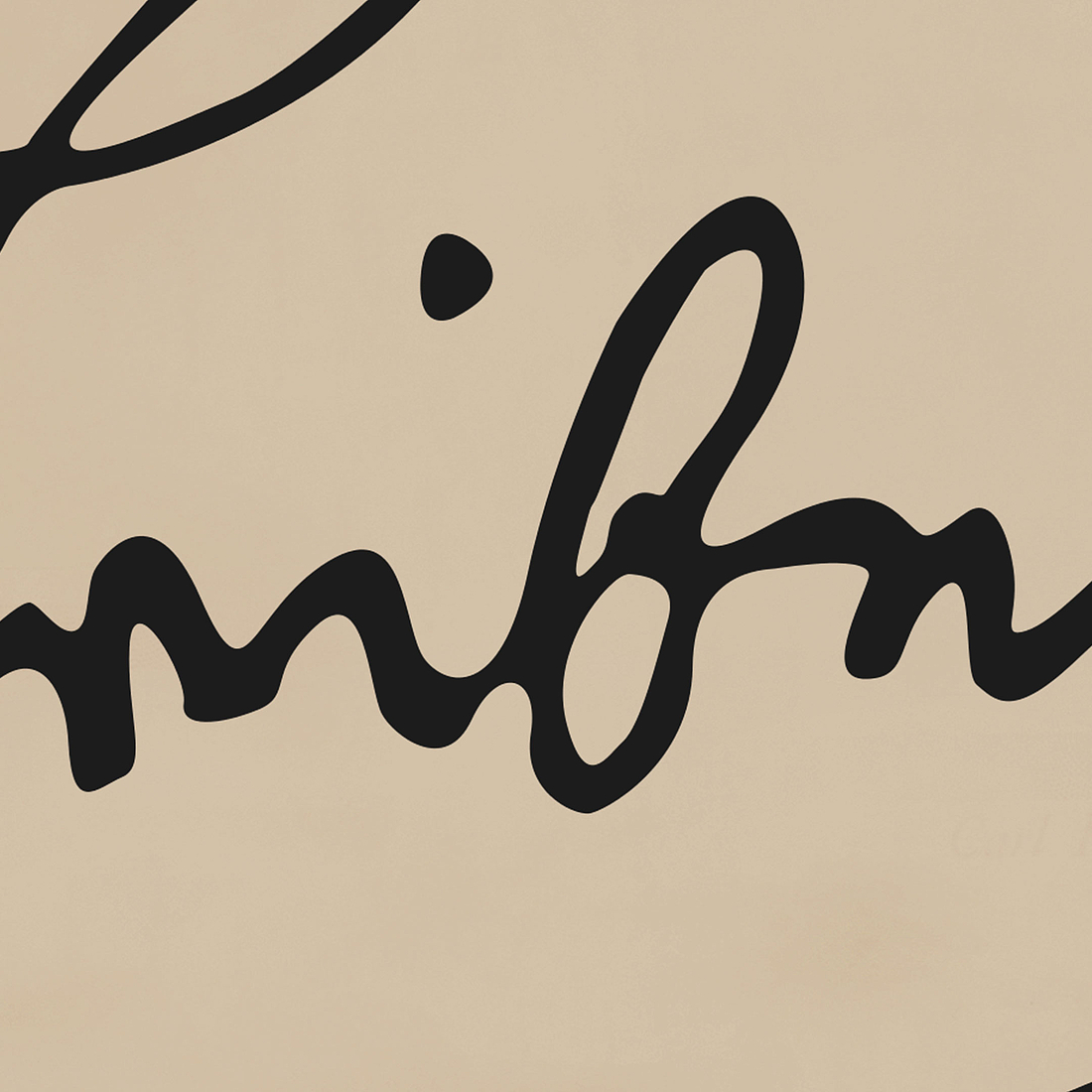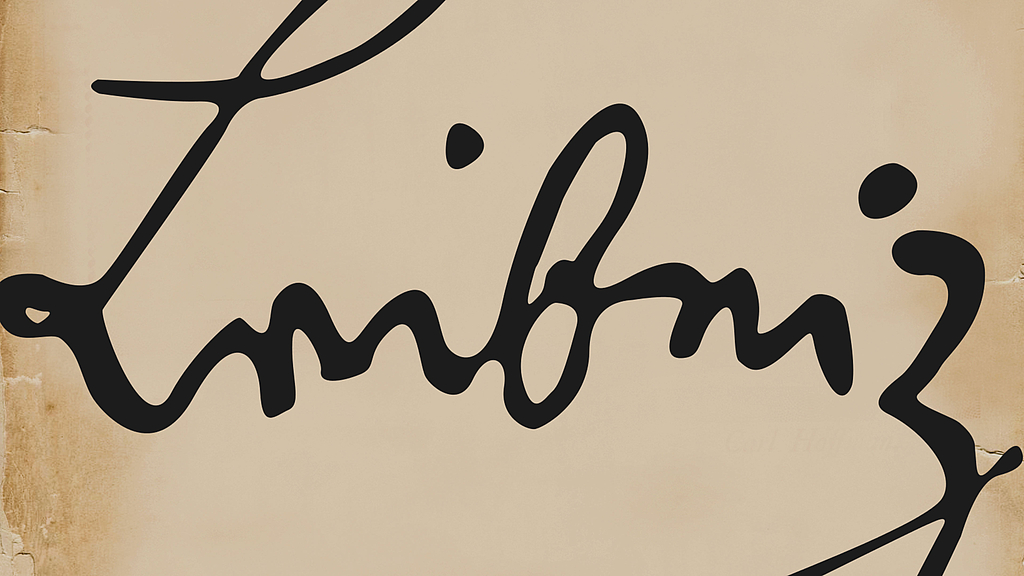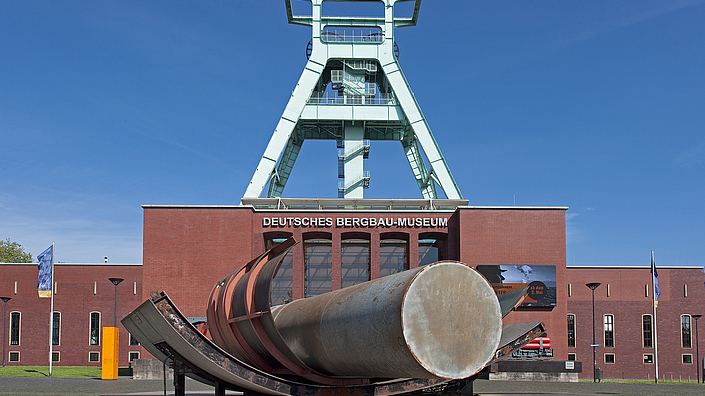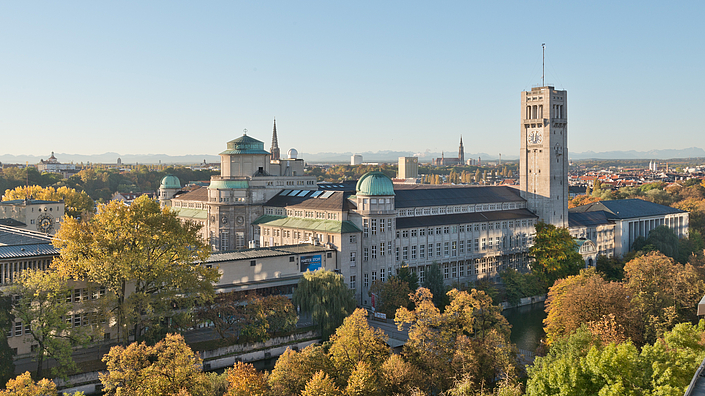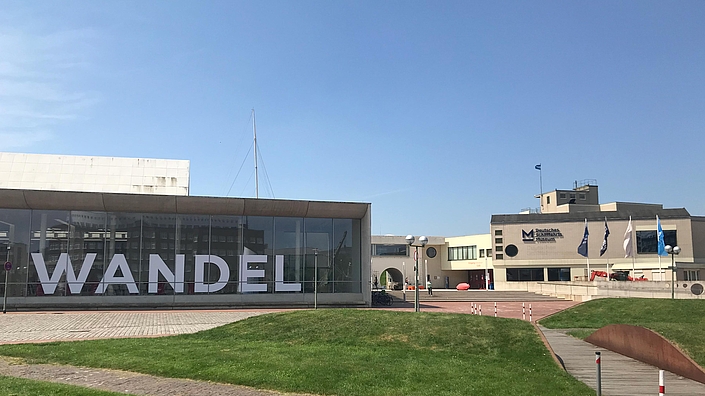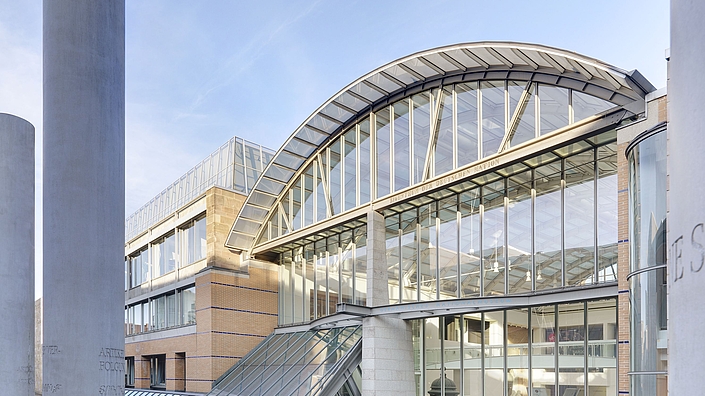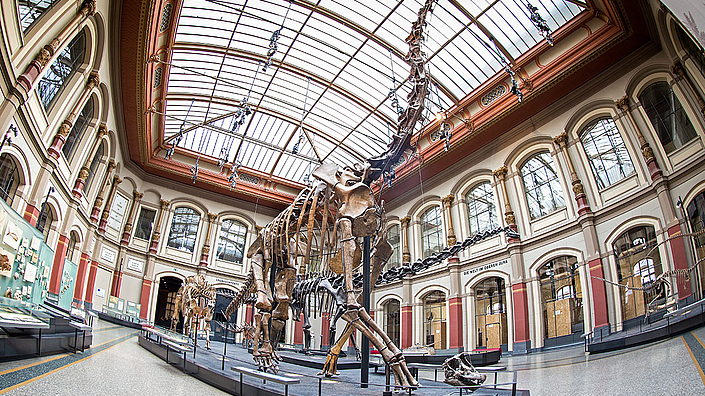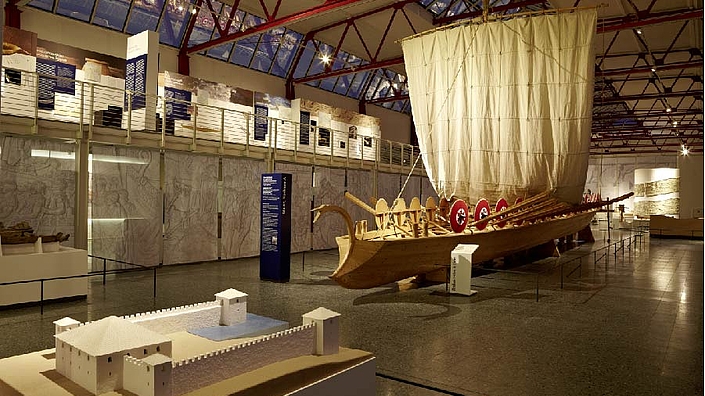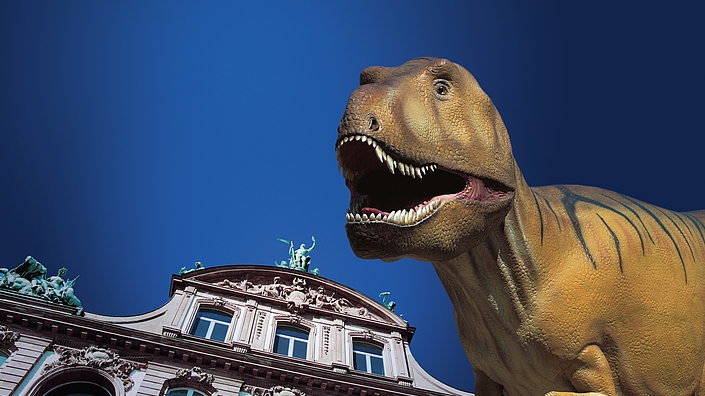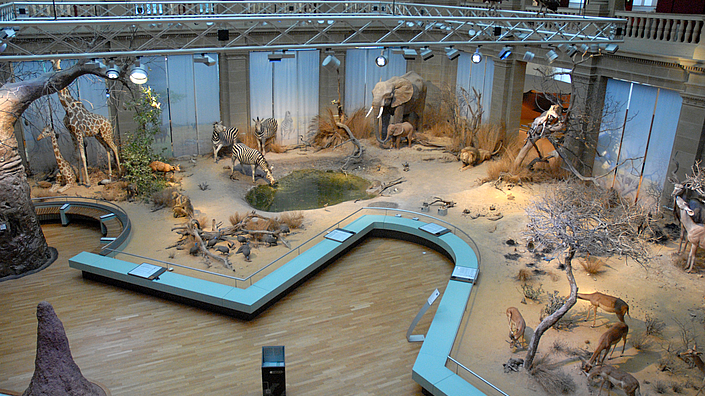Research and exhibiting at the Leibniz research museums
We – the German Maritime Museum – are one of eight Leibniz research museums. We research, conserve, exhibit and communicate German maritime history.
What is a 'research museum'? A museum at which scientists research and visitors marvel at this research? A museum that displays research and whose exhibitions fulfill particularly high scientific standards? There is no generally-applicable definition for a 'research museum', not even in the Leibniz Association. They do all have one thing in common, however: The title is associated with particular research and science-based tasks that set it apart from other institutions. It is a distinction that brings with it great responsibility.
A research museum is a place in which experts – mostly behind the scenes – search for knowledge. A place where this knowledge can be passed on to visitors via the exhibitions. A research museum is an establishment that invites communication. A place that sends one off on adventures. A place of social information through looking at issues that move society. An establishment which demonstrates puzzles and solutions that are thrown up by the objects displayed.
The eight research museums of the Leibniz Association connect research and education in a particular way. In addition to permanent and special exhibitions, comprehensive research on earth history, on biodiversity and on cultural and technical history is conducted here. The unique collections comprise more than one hundred million objects and form the basis for the scholarship. With their exhibitions, the museums reach millions of people every year and thus make an important contribution to the communication of knowledge
Action Plan Leibniz Research Museums
The eight Leibniz research museums have been united even further in the context of an "Action Plan Leibniz Research Museums" sponsored by the national and state governments. The goal was to strengthen their activities in education and transfer of knowledge and to intensify the networking between them. This meant that the Leibniz research museums became even more visible than before as places of innovative exhibitions, citizen science and knowledge transfer.
With regard to joint activities, the action plan concentrated on the four key elements of scientific communication, communication research and standards, restoration and conservation research and international networking.
The four pillars of the joint activities of the action plan were:
1. Innovative formats of scientific communication as "places of dialogue"
2. Intensification and development of communication research as well as networking on this theme
3. European Year of Cultural Heritage 2018
4. Global Summit of Research Museums
Action Plan Leibniz Research Museums
The eight Leibniz research museums have joined forces more closely within the framework of a "Leibniz Research Museums Action Plan" funded by the federal and state governments. The aim is to strengthen their activities in education and knowledge transfer and to improve networking among the museums.
This made Leibniz research museums even more visible than before as places of innovative exhibitions, citizen science and knowledge transfer. With regard to joint activities, the action plan sets four priorities: science communication, communication research and standards, restoration and conservation research and international networking.
Four pillars of joint activities of the action plan
1. Discursive and interactive formats of science communication as "Orte des Dialogs" ("Places of Dialogue")
"With this series of events, we offer actors from science, politics and the public a platform for the interactive discussion of socially relevant topics such as climate change, dealing with our natural and cultural heritages or the loss of biological diversity. The presentation of historical contexts and the future effects of these topics can be illuminated in different ways by the individual research museums and are thus addressed comprehensively. The focus was often on individual or multiple museum objects.
2. Strengthening and expanding research about mediation and networking regarding this topic
In the network, the eight Leibniz research museums are expanding their cooperation in various areas on the basis of their research. In doing so, they developed practical experience in knowledge transfer as well as in education and mediation and how these can be passed on to other research museums. In addition, they discussed how new standards and innovative formats can be developed in the transfer of knowledge and research. For this purpose, there are various workshops on virtual, mixed and augmented reality, among others. The citizen participation format "DSM Werft" (DSM shipyard) was developed in our house and has been implemented within the framework of the special exhibition "360° POLARSTERN - A virtual research expedition".
3. European Year of Cultural Heritage 2018
With the European Year of Cultural Heritage 2018, the cultural heritage of the whole of Europe has been brought into the public eye. Museum collections are naturally part of this heritage. But the ravages of time gnaw away at every museum treasure, regardless of whether an object on display is 50 years old, 500 years old or 5,000 years old. The Leibniz Association's research museums used the Cultural Heritage Year as an opportunity to focus on their research and their special expertise in the preservation of cultural assets. All eight museums together - from the natural history to the cultural history to the technical museum - presented themselves with their "experts in preservation" in events, exhibitions and theme weeks.
The special exhibition "The Tooth of the Tide - Maritime Treasures under the Microscope" focused on the conservation challenges of the German Maritime Museum. Each of the various exhibits, whether the centuries-old Bremen cog, the two special and unique tidal calculating machines or the gigantic sperm whale skeleton, each requires special treatment and care. Whether nature, history, mining or shipping: all eight Leibniz research museums provided exciting contributions from their houses on the topic of conservation science. Learn more about them in the joint film series.
4. Global Summit of Research Museums
The world's first interdisciplinary conference of research museums took place in Berlin from November 4 to 6, 2018. The aim was to intensify the dialogue between science, culture and society in order to develop new innovative solutions to the challenges of the modern world using cutting-edge science and international digital infrastructures. During the conference, it was decided that a global knowledge and collection network of research museums will be created. Read more about the summit here.
Action plan I at the German Maritime Museum
Interactive discussions
German Maritime Museum shipyard
The German Maritime Museum as part of the Leibniz Association
Being part of the Leibniz Association is associated with requirements on the quality of our scientific work. The last evaluation took place in 2017. This is both recognition and duty. Bound to this is the clear duty to embed research on maritime history into questions of general social relevance and make these cross-regionally visible. Our belonging to the Association is expressed in the epithet for our institution: Leibniz Institute of Maritime History. We contribute to a sustainable relationship with the seas and coastlines by focusing our research and exhibition programme, "Mankind & the Sea" on economic, scientific and ecological themes. Our belonging to the Leibniz Association enables the execution of international and interdisciplinary activities that take place behind and in front the scenes. As a Leibniz research museum we are committed to the tenet of understanding exhibitions as a medium of scientific approaches, methods and results. In close cooperation with the other Leibniz institutions and Leibniz research museums, we develop joint projects and combine different expertise and to some extent also objects.
The Leibniz Association – Research for society
With its namesake, the polymath Gottfried Wilhelm Leibniz (1646-1716), the Leibniz Association associates curiosity for the world and its phenomena as well as the readiness to get to the bottom of problems with scientific methods and to contribute to the improvement of the world in which we live.
93 institutes and museums are part of the Leibniz Association, which is a non-profit association. These are promoted by the national and state governments due to their scientific excellence and social relevance on the basis of regular scientific evaluation processes. The institutions of the Leibniz Association work together on a national and international basis with universities, institutes of other research organisations, companies, state institutions and social organisations. The Leibniz Association places particular focus on the close collaboration with the universities: This is expressed in joint appointments and the use of the institutions and research museums as 'joint labs' for the academic world. The Leibniz Association has various internal and external decision-making and advisory committees. The administrative office supports these committees within the respective competence.
The Leibniz Association actively promotes the networking of its post-doctoral and doctoral candidates on an international level. The integration into the Leibniz Association is thus also a central element of the promotion of young scientists and quality assurance within the individual institutes.

